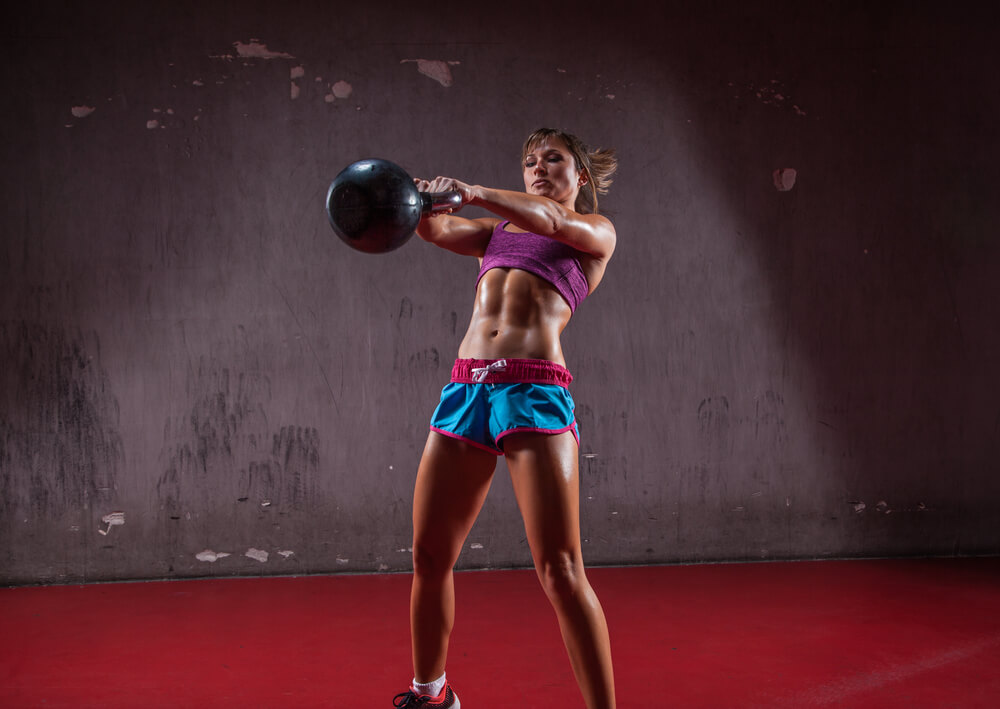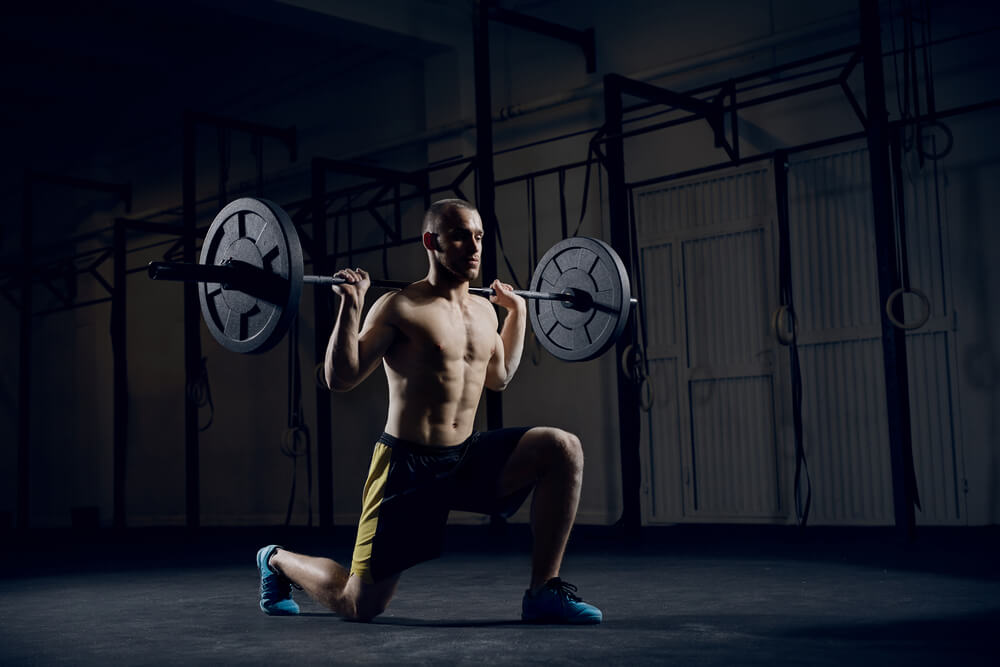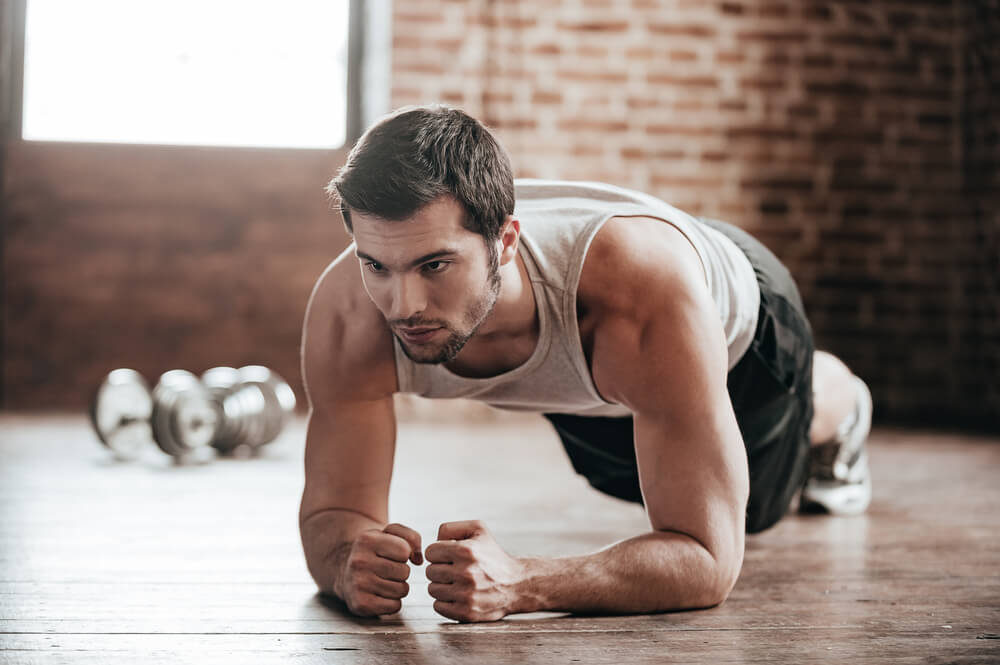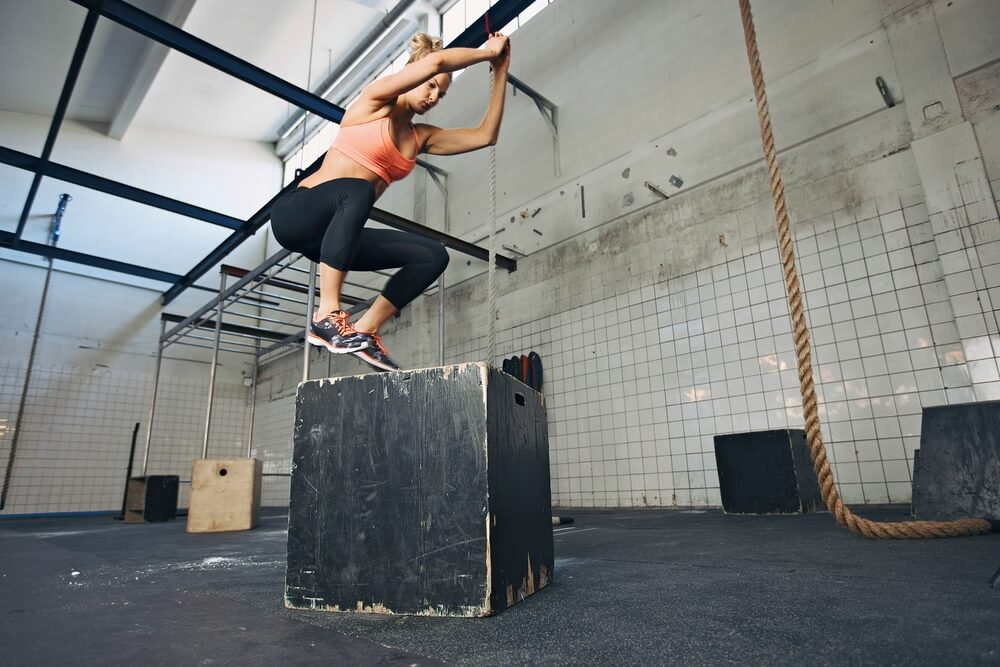
When you have a strong core and strong leg muscles, you have a strong body, a working system. Lower body strength is vital for so many things – balance, posture, fewer injuries and accidents, better performance and stride, and general well-being.
The core is your middle-section and when it’s strong, it makes your body strong too. The most effective exercises for these are leg exercises. They don’t work only on your hamstrings, glutes, and quads – they work on the core too.
The good news with the lower body workout is that it’s the best place to build muscle-when muscles are built, they burn calories! The lower body has the largest muscle in the body – gluteus maximus, or your butt.
So, all the exercises that focus on this region, benefit the body immensely.
There are many exercises that can work wonders for your legs and core. Here are our top picks.
Best Exercises For Your Legs and Core
#1 Squats
Work your butt off with the squat. This simple exercise involves getting on your haunches and rising up. Add some weights or resistance to variation and great results. The basic body-weight squat is simple. Start with standing up straight. Make sure you’re at full length, your body straight and tall. Your feet need to spread, not too wide, at a shoulder-width distance. Now lower your body to the ground as low as you can go. Push your hips back and keep your knees bent. Hold the squat position and then slowly get back to the starting position. Once you have adequate practice, consider the jump squat, a barbell squat with a wide stance, or with weight plates. Make sure your breathing is regular and smooth. Squats work to tone the lower body and are also good for the core. In fact, a website fitnessgoals.com has come up with fitness goals 30 day squat challenge to make people do squats. Their goal is to help people who want to get toned legs and core by challenging them to do it. When a person does squats for 30 days, the person will see the difference and keep doing it regularly and reap the rewards.
#2 Kettlebell Swing
Stand with your legs apart and the kettlebell on the floor in front of you. Take hold of the kettlebell with an under the handle move, with both hands, palms facing up, not down. Now, make sure to keep your lower back flat, and stretch your hips to lift the kettlebell off the floor. With a deep breath now, bend your hips and swing the weight between your legs. When your exhale, extend your hips and raise the kettlebell to shoulder level. Bring the kettlebell down slowly and repeat. This exercise works on your arms as well, but also provides stability and strength to your shoulders and back. When you extend your back and hips, you create more flexibility in these places.
#3 Lunges
With a lunge, you use one leg at a time to work a whole bunch of muscles – core, hamstrings, hips, glutes and the inner thigh muscles. The lunge involves simple movements. Stand with legs apart, about hip-width apart. Straighten the core. Take a huge step forward with your right leg and move your weight forward till your heel touches the floor. Now lower your body so that the thigh and the floor are parallel and the shin is vertical. If you can, make sure your knee touches the floor. All the while, your weight needs to be on the right heel. Press the same heel to get back to start. Repeat with the left leg. This exercise works well in reverse and in lateral too. Kettlebells or even a bottle of water for weights can help with the lunge.
#4 Planks
Become as strong as wood with the plank. This exercise does not have the energy and moves of the lunges or the swings and requires a person to hold a position for as long as possible. Here, both upper and lower body gets a workout along with the shoulders, arms and butt. For a plank, get into a push-up position on the floor. Push your toes into the ground, squeeze your butt and muscles tight and hold firm. Don’t make your legs inflexible, you need them in a comfortable position. With your head in line with your neck, focus on a spot a little beyond your hands.
Unlike a push-up, you don’t lower yourself to the ground now. Just hold the position for about 20 seconds or as long as you can without your breath becoming ragged and your arms and legs trembling. The plank uses your entire body weight to give you superb results. If the weight on your hands is too much, use your forearms to balance yourself. You can even lower your knees to the ground for ease. The plank is great when you do a single arm or single leg plank.
#5 Jumps
Jumps give the body a burst of energy and work to extend your calves and thighs. Do jumping jacks or the jumping calf raise. You can even incorporate the jumps in the other exercises you do.
Cardio-vascular exercises, cycling, running, are also good options. With every exercise make sure to focus on your breathing and to keep the body working in the optimum position.
Proper Guidance And Proper Form Is Key
Though the above-mentioned exercises can work wonders for your legs and core, there are various injuries that are associated with them
Let us look at them below:

Squats
Though the benefits of squats cannot be overstated it is believed by women that doing it often can lead to wide hips. If you use heavy weights and do not use proper form then there are chances of getting wide hips but it has not yet been scientifically proven yet. The most common injury that is associated with squats is knee injuries. The US military, in fact, banned their soldiers from doing squats in the 1950’s. But with various studies that have been conducted later, it has been determined that squats do not cause knee injuries. However, if you do not have the correct posture while doing them you may harm your knees.
Another injury that is associated with squats in back injuries, specifically injuries to the lower back. This has been proven that it happens due to poor form. When the person leans a lot forward or does not engage the muscles of the abs and the glutes, back injuries can occur. The main reason why people get injured while doing squats is not warming up or due to not stretching the muscles. Warm up is very important before you do squats.

Kettlebell swing
Kettlebells are a fairly new addition to the gyms when compared to dumbbells and many people have taken to it like fish to water. The kettlebell swing is believed by many to be very beneficial and can increase your explosive strength but not many know how to use it properly. Even many fitness trainers teach the kettlebell swing wrong. If you think what is there to learn when all you need to do is swing, then you cannot be farther from reality, proper form is vital when you do kettlebell swings. If you do not have proper technique you run the risk of back injuries. Not just back injuries, while you do a kettlebell swing your core should be engaged, if it is not, you will put a lot of pressure on your shoulders and neck and they can get injured very easily. Also if you do not keep your feet apart as required you will be putting a lot of pressure on your knees and it can give away. Always practice kettlebell swings under the guidance of a trained professional.

Lunges
Again a very beneficial exercise for the legs and core, most fitness enthusiasts love doing lunges, with or without weights. Again the problem with lunges is proper form. When you exercise you need to exercise right to get the best benefits of your time and effort. If you do not have proper form then you can injure your knee. Many people feel that lunges can harm their knees; it cannot be farther from the truth. It can harm you only if you do not do it properly or if you carry a lot of weight, which makes you lose your form. You should look straight ahead while doing lunges and if you look down you will put a lot of pressure on your shoulders and neck and this could lead to injuries. If you do not keep your back straight you could have back problems too.

Planks
This exercise has caught the fancy of one and all. It seems easy to do and people who do Pilates and yoga do this usually a lot. Planks are good for the core muscles and every one advocates it. The benefits are fine but what many people do not let on is that it can cause serious injuries. The most common is breathing difficulty because of lack of oxygen. Our body needs its share of oxygen but when you are holding your stomach muscles tight and breathing your body does not get the required oxygen and this can lead to illnesses such as asthma and other respiratory diseases. People who do a lot of planks have also complained of insomnia, if you want to stay awake then you can do it. Nowadays, everyone takes part in plank challenges. If you do a plank for 2 minutes you are considered fit and if you can do it for 5 minutes you are considered to be super fit.
When you do planks for a longer duration you put a lot of pressure on the costochondral joint. When your body is lifted your ribs and shoulder are also put under extreme pressure. Your body can only withstand a certain amount of pressure and when there is extreme pressure there is bound to be injuries. Many people have complained of pain in the chest and most have even thought that they had a heart attack. It is actually the rib getting injured which causes the pain. A few weeks rest will rid you of the pain but the traumatic scars will remain etched in your memory for life. Hence, it is essential to only do planks for a small amount of time and not put too much pressure on the body.

Jumps
Jumps are great and beneficial for your core and legs, there is no doubt, but again it is about proper form, if you do not jump properly you will be putting your knees under a lot of strain. Whenever you jump you need to land on your toes and not on your heels. If you do so you will put unnecessary strain on your knees and the knees might get inflamed. If you land on your heels you also risk the chances of heel injuries too. Your calf muscles can also tear and you might need a lot of time for it to heal. Your hamstring can also get pulled and you will be in agony. But if you jump slowly and land on your feet like a cat you will not get an injury. In fact, when you jump your trainer will always tell you to land like a cat, you should keep that in mind to stay away from injuries.
Conclusion
Now that you know the best exercises for your legs and core as well as the associated risks, you should train yourself properly to do it using the right technique. Without the right technique you are bound to fail, so speak to your fitness trainer and ask him to help you achieve the right technique and form.
Once you learn the right technique and if your fitness trainer is happy with the way you are doing the exercises you can start doing them on your own without any supervision.
-Terry Asher
Terry Asher
Latest posts by Terry Asher (see all)
- Better Family – Product Review Liquid Daily 2 oz - Dec 16, 2024
- Post-Workout Recovery: The Key to Optimal Performance - Nov 25, 2024
- Pre-Workout Supplements – Everything You Need To Know - Nov 18, 2024









[…] via- https://gymjunkies.com/best-exercises-for-your-legs/ […]
[…] Scoop – March 18, 2018 0 5 Facebook Twitter Google+ Pinterest […]
[…] Scoop – March 20, 2018 0 6 Facebook Twitter Google+ Pinterest […]
[…] This is the most obvious way to confuse your muscles. Just change the lift entirely. But, again, if you’re lifting at home you don’t have as many lifting options. Not a problem there. Changing the lift can be as little as changing where you place your arms or your legs. […]
[…] when you think about it you probably don’t have too many leg exercises to perform. While you might have a half-dozen different bicep exercises, which in comparison is a […]
[…] or strength training as it is primarily known as, has many great benefits. Not only are strong legs and a strong musculature correlated with a longer life, but with a better mood, higher energy […]
[…] bad exercise is the Jefferson Squat. If you want to build bigger legs, avoid this exercise. There are simply too many things that go against functional movement when […]
[…] or strength training as it is primarily known as, has many great benefits. Not only are strong legs and a strong musculature correlated with a longer life, but with a better mood, higher energy […]